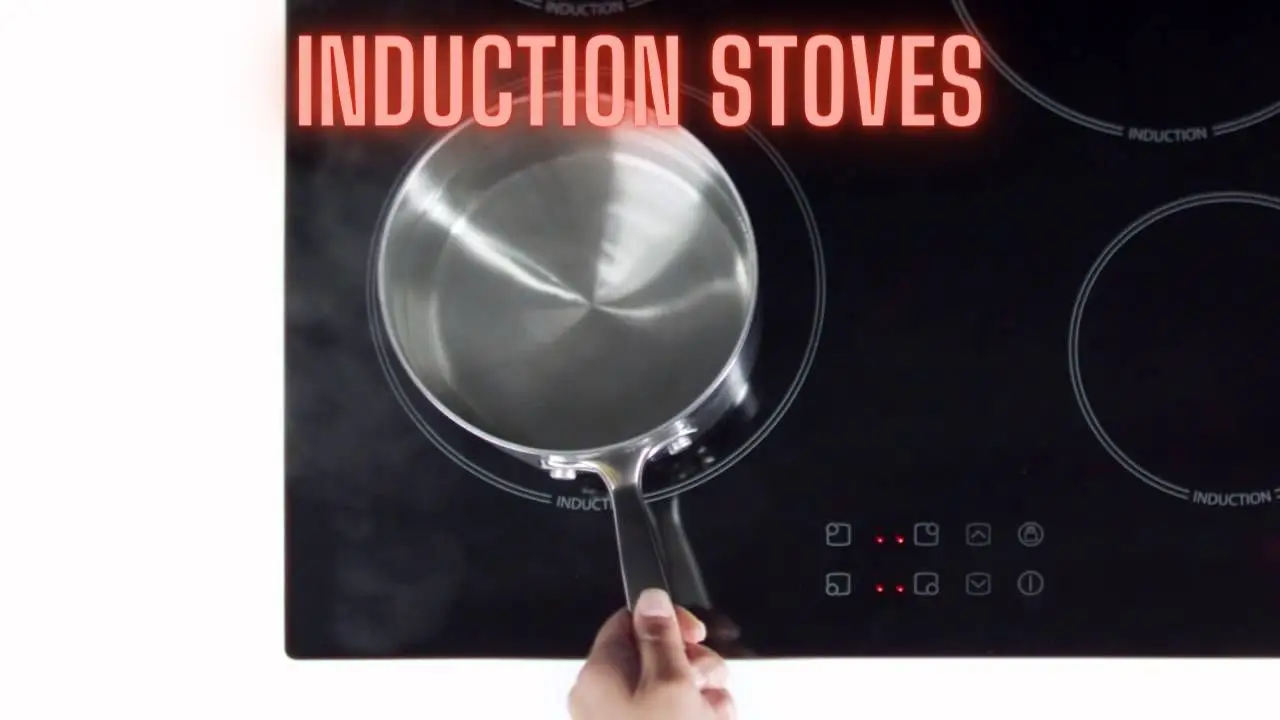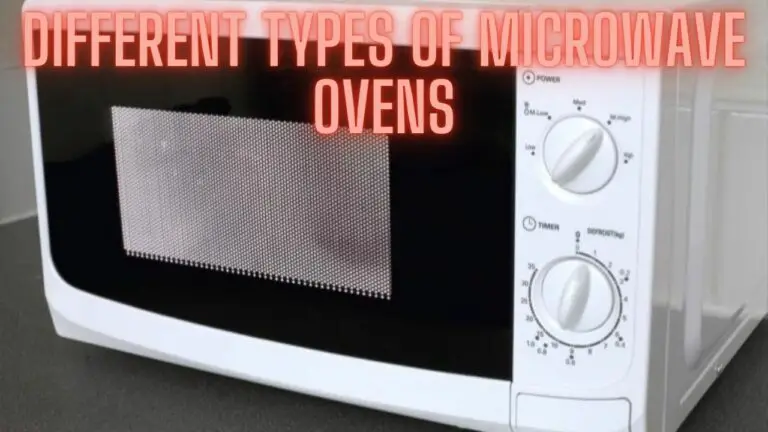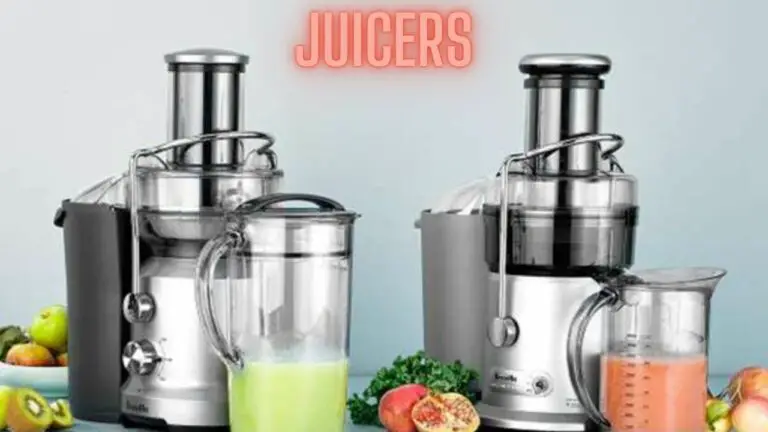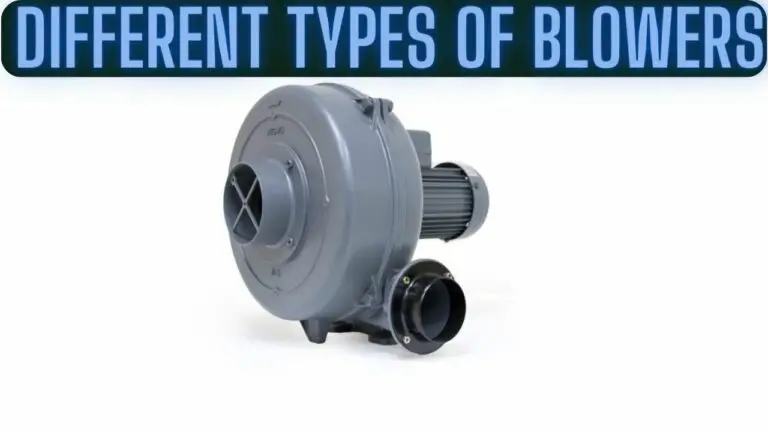Mastering Induction Cooking: A Comprehensive Guide
Introduction
Induction cooking has gained popularity in recent years as a modern and efficient method of cooking. Unlike traditional gas or electric cooktops, which generate heat through flames or heating elements, induction cooktops use electromagnetic technology to heat cookware directly. This innovative cooking method offers several advantages, including faster heating, precise temperature control, and improved energy efficiency. In this guide, we’ll explore how induction cooking works, its benefits, safety considerations, maintenance tips, and more. Whether you’re a seasoned chef or a cooking enthusiast, understanding the principles of induction cooking can enhance your culinary experience and elevate your kitchen to new heights of efficiency and convenience.
How Induction Cooking Works
Induction cooking relies on electromagnetic technology to generate heat directly in the cookware itself, rather than through traditional heating elements or flames. Here’s how the process works:
- Electromagnetic Induction: When an induction cooktop is turned on, an electric current flows through a coil of copper wire beneath the ceramic surface. This creates a magnetic field around the coil.
- Magnetic Cookware: To use an induction cooktop, you need cookware that is magnetic and contains ferrous material, such as cast iron, stainless steel, or certain types of magnetic stainless steel. Non-magnetic cookware, such as aluminum or copper, will not work on an induction cooktop.
- Induction Heating: When magnetic cookware is placed on the induction cooktop, the magnetic field induces an electric current in the cookware itself. This generates heat directly within the base of the cookware.
- Heat Transfer: The heat generated in the cookware is transferred to the food or liquid inside, allowing for efficient and precise cooking. Unlike gas or electric cooktops, which heat the entire cooking surface and then transfer heat to the cookware, induction cooking heats the cookware directly, resulting in faster heating times and more precise temperature control.
- Instantaneous Control: One of the key advantages of induction cooking is its ability to provide instantaneous and precise temperature control. When you adjust the temperature settings on an induction cooktop, the changes take effect almost immediately, allowing for precise adjustments during cooking.
- Safety Features: Induction cooktops are equipped with various safety features, including automatic shut-off mechanisms and pan detection sensors. If the cookware is removed from the cooking surface or if an incompatible pan is used, the induction cooktop will automatically turn off to prevent accidents and damage to the cooktop.
Overall, induction cooking offers numerous benefits, including fast heating times, precise temperature control, energy efficiency, and improved safety features. Understanding how induction cooking works can help you make the most of this innovative cooking technology in your kitchen.
Advantages of Induction Cooking
- Speed: Induction cooktops heat up much faster than traditional gas or electric cooktops. Because the heat is generated directly in the cookware, there’s virtually no waiting time for the cooking surface to reach the desired temperature. This allows for quicker cooking and reduced meal preparation times.
- Precision Temperature Control: Induction cooktops offer precise temperature control, allowing you to adjust the heat settings with accuracy. This precision is essential for delicate cooking tasks such as simmering, melting, or maintaining a specific temperature for sous vide cooking. The ability to control the temperature precisely helps prevent overcooking or burning of food.
- Energy Efficiency: Induction cooking is highly energy-efficient compared to gas and electric cooking methods. Since the heat is generated directly in the cookware, there is minimal heat loss, resulting in more efficient cooking. Additionally, induction cooktops only consume electricity when they are in use, making them more energy-efficient overall.
- Safety: Induction cooktops are equipped with several safety features that make them safer to use compared to gas or electric cooktops. Because the cooking surface itself doesn’t get hot, there’s a reduced risk of burns from accidental contact. Additionally, induction cooktops have features like automatic shut-off, pan detection sensors, and child lock functions to prevent accidents.
- Easy Cleanup: The smooth, flat surface of induction cooktops is easy to clean and maintain. Since the cooktop itself doesn’t get hot, spills and splatters are less likely to burn onto the surface. Most induction cooktops can be wiped clean with a damp cloth or sponge, making cleanup a breeze.
- Cool Cooking Surface: Unlike gas or electric cooktops, which emit heat from the cooking surface, induction cooktops remain relatively cool to the touch during operation. This reduces the risk of accidental burns and makes induction cooking more comfortable, especially in warm climates or during hot summer months.
- Versatility: Induction cooktops are compatible with a wide range of cookware materials, including stainless steel, cast iron, and certain types of magnetic stainless steel. This versatility allows you to use your existing cookware collection with an induction cooktop or invest in new cookware specifically designed for induction cooking.
- Modern Design: Induction cooktops often feature sleek, modern designs that can complement any kitchen decor. The flat, smooth surface adds a contemporary touch to the kitchen and can be integrated seamlessly into countertops or kitchen islands.
Overall, the advantages of induction cooking, including speed, precision, energy efficiency, safety, easy cleanup, versatility, and modern design, make it a popular choice for home cooks and professional chefs alike.
Induction Cooktop Components
- Cooking Surface: The cooking surface of an induction cooktop is typically made of smooth, durable ceramic glass. This flat surface provides a stable and even cooking area for pots and pans.
- Induction Coils: Beneath the ceramic glass surface, induction cooktops contain one or more induction coils made of copper wire. These coils generate an electromagnetic field when an electric current passes through them.
- Control Panel: The control panel is located on the surface of the cooktop and allows users to adjust temperature settings, select cooking modes, set timers, and perform other functions. Control panels may feature touch controls, dials, or buttons for user convenience.
- Power Supply: Induction cooktops require an electrical power supply to operate. They are typically connected to a standard household electrical outlet or wired directly into the home’s electrical system.
- Fan and Ventilation System: Some induction cooktop models may include built-in fans and ventilation systems to help dissipate heat and odors generated during cooking. These fans help keep the cooktop and surrounding area cool and comfortable.
- Safety Features: Induction cooktops are equipped with various safety features to prevent accidents and protect users. These may include automatic shut-off mechanisms, pan detection sensors, overheating protection, and child lock functions.
- Cookware Compatibility Sensor: Many induction cooktops feature a cookware compatibility sensor that detects whether the cookware is suitable for induction cooking. This sensor ensures that only compatible pots and pans are used on the cooktop to prevent damage.
- Indicator Lights: Indicator lights on the control panel provide visual feedback to users, indicating when the cooktop is powered on, when a cooking zone is active, when a pot or pan is detected, and other important information.
- Cooking Zones: Induction cooktops typically feature multiple cooking zones or elements of varying sizes. Each cooking zone can be independently controlled, allowing for simultaneous cooking of multiple dishes at different temperatures.
Understanding the components of an induction cooktop can help users operate the appliance effectively and make the most of its features and functionalities. Whether you’re a beginner or an experienced cook, familiarizing yourself with the components of your induction cooktop can enhance your cooking experience and ensure optimal performance.
Choosing the Right Cookware for Induction Cooking
Choosing the right cookware for induction cooking is crucial to ensure optimal performance and safety. Since induction cooktops rely on magnetic fields to generate heat, only cookware made from ferrous materials will work effectively. Here are some factors to consider when selecting cookware for induction cooking:
- Material Compatibility: Induction cooktops require cookware made from ferrous magnetic materials. Compatible materials include:
- Cast iron
- Magnetic stainless steel (look for a label indicating suitability for induction)
- Enameled cast iron
- Some types of carbon steel
- Magnetic Test: If you’re unsure whether your existing cookware is compatible with induction cooking, perform a simple magnetic test. Place a magnet on the bottom of the cookware—if it sticks firmly, the cookware is suitable for induction cooking.
- Flat and Even Bottom: Opt for cookware with a flat and even bottom that makes direct contact with the induction cooktop surface. A warped or uneven bottom may not transfer heat efficiently and can lead to uneven cooking.
- Size and Shape: Choose cookware that matches the size and shape of the cooking zones on your induction cooktop. Using cookware that is too large or too small for the cooking zone may result in inefficient heating and wasted energy.
- Thickness: Cookware with a thicker bottom and sidewalls tends to distribute heat more evenly and can provide better cooking results. Avoid cookware that is too thin, as it may warp or deform when exposed to high heat.
- Handles: Consider the type of handles on the cookware and ensure they are heat-resistant and comfortable to grip. Handles that stay cool during cooking make it easier to handle the cookware safely.
- Quality and Durability: Invest in high-quality cookware that is durable and built to last. While premium cookware may have a higher upfront cost, it can offer better performance and longevity, making it a worthwhile investment in the long run.
- Brand Recommendations: Check with the manufacturer of your induction cooktop for recommended cookware brands and models. Some induction cooktop manufacturers may provide a list of compatible cookware options for their specific models.
- Multi-Purpose Use: Choose cookware that can be used for a variety of cooking tasks, including frying, boiling, sautéing, and simmering. Versatile cookware pieces, such as a skillet or saucepan with a lid, can serve multiple purposes in the kitchen.
By considering these factors when selecting cookware for induction cooking, you can ensure compatibility, efficiency, and optimal performance on your induction cooktop. Investing in high-quality, compatible cookware will enhance your cooking experience and help you achieve delicious results every time.
Safety Considerations with Induction Cooking
- Electromagnetic Fields: While induction cooktops are generally safe to use, they generate electromagnetic fields (EMFs) during operation. Although the strength of these fields is considered low and within safe limits, individuals with certain medical devices, such as pacemakers or implanted defibrillators, should consult with their healthcare provider before using an induction cooktop.
- Heat: While the cooking surface of an induction cooktop remains relatively cool during operation, the cookware itself can become very hot. Use caution when handling hot cookware and avoid touching the cooking surface directly. Always use oven mitts or pot holders to handle hot pots and pans.
- Pan Detection Sensors: Most induction cooktops are equipped with pan detection sensors that automatically detect the presence of cookware on the cooking surface. This feature helps prevent accidents and injuries by ensuring that the cooktop only activates when compatible cookware is in place.
- Automatic Shut-Off: Many induction cooktops are equipped with automatic shut-off features that turn off the cooktop after a certain period of inactivity or if the cookware is removed from the cooking surface. This helps prevent accidents and reduces the risk of overheating.
- Child Lock Function: Some induction cooktop models come with a child lock function that disables the control panel to prevent children from accidentally turning on the cooktop or adjusting the settings. This feature provides added safety in households with young children.
- Ventilation: Proper ventilation is important when using any type of cooktop, including induction cooktops. Ensure that your kitchen is well-ventilated to remove cooking odors, steam, and smoke from the air. Use a range hood or exhaust fan to improve air circulation and maintain a comfortable cooking environment.
- Cleaning and Maintenance: Keep the induction cooktop clean and free of debris to prevent potential safety hazards. Wipe up spills and splatters promptly, and avoid using abrasive cleaners or utensils that could scratch the ceramic glass surface. Regular maintenance and cleaning will help ensure safe and efficient operation of the cooktop.
- Installation: If you’re installing a new induction cooktop, follow the manufacturer’s instructions carefully and consider hiring a qualified professional for installation. Ensure that the cooktop is securely mounted and properly connected to the electrical supply to prevent accidents and electrical hazards.
By following these safety considerations, you can enjoy the benefits of induction cooking while minimizing the risk of accidents and injuries in the kitchen. Remember to always exercise caution when using any cooking appliance and prioritize safety at all times.
Cleaning and Maintenance of Induction Cooktops
Cleaning and maintaining your induction cooktop is essential to ensure optimal performance, prolong its lifespan, and keep it looking its best. Here are some tips for cleaning and maintaining your induction cooktop:
- Regular Cleaning: Wipe down the induction cooktop surface with a soft, damp cloth or sponge after each use to remove spills, splatters, and food residue. Avoid using abrasive cleaners, steel wool, or harsh chemicals, as they can scratch or damage the ceramic glass surface.
- Use Cooktop Cleaner: For stubborn stains or burnt-on food, use a cooktop cleaner specifically formulated for ceramic glass surfaces. Apply the cleaner to the affected areas and gently scrub with a non-abrasive scrubbing pad or sponge. Rinse thoroughly with water and wipe dry.
- Remove Residue Promptly: Don’t allow spills or food residue to accumulate on the cooktop surface, as they can become more difficult to remove over time. Clean up spills promptly to prevent them from baking onto the surface and causing stubborn stains.
- Avoid Boilovers: To prevent boilovers and spills, use cookware that is appropriate for the size of the cooking zone and avoid overfilling pots and pans. Monitor cooking closely, especially when boiling liquids or cooking at high temperatures.
- Cool Down Completely: Allow the induction cooktop to cool down completely before cleaning to avoid the risk of burns or injury. Never attempt to clean the cooktop while it is still hot or immediately after cooking.
- Clean Ventilation Openings: Periodically check and clean the ventilation openings around the edges of the cooktop to ensure proper airflow and ventilation. Use a soft brush or vacuum cleaner attachment to remove any dust or debris that may accumulate in these areas.
- Check Control Panel: Wipe down the control panel and touch controls with a soft, damp cloth to remove fingerprints, grease, and dirt. Avoid getting water or cleaning solution into the control panel to prevent damage to electronic components.
- Inspect Cookware Compatibility: Regularly check the compatibility of your cookware with the induction cooktop to ensure optimal performance. Replace any damaged or incompatible cookware to prevent scratching or damage to the cooktop surface.
- Schedule Professional Maintenance: Consider scheduling professional maintenance for your induction cooktop periodically to ensure it is in good working condition. A qualified technician can inspect the cooktop, clean internal components, and perform any necessary repairs or adjustments.
- Protective Cover: Consider using a protective cover or cooktop protector when the cooktop is not in use to prevent scratches, spills, and damage. This can help prolong the lifespan of your induction cooktop and keep it looking like new.
By following these cleaning and maintenance tips, you can keep your induction cooktop clean, well-maintained, and operating efficiently for years to come. Regular care and attention will help you enjoy the benefits of induction cooking while keeping your kitchen looking its best.
Common Troubleshooting Tips for Induction Cooktops
- No Power: If the induction cooktop is not receiving power or not turning on, check that it is properly plugged into a functioning power outlet. Ensure that the circuit breaker or fuse in your electrical panel has not tripped or blown. If the issue persists, contact a qualified electrician for assistance.
- Pan Detection Error: If the cooktop displays a pan detection error or does not recognize the cookware, ensure that the cookware is compatible with induction cooking and contains magnetic material. Place the cookware on the cooking zone properly and ensure it is centered and making good contact with the cooktop surface.
- Uneven Heating: If the induction cooktop is not heating evenly, check that the cookware is flat and has a smooth bottom. Ensure that the cookware is the appropriate size for the cooking zone and is centered properly. If necessary, adjust the position of the cookware on the cooktop surface.
- Error Codes: If the induction cooktop displays error codes or error messages, refer to the user manual for troubleshooting instructions. Error codes may indicate issues such as overheating, sensor malfunctions, or electrical problems. Follow the manufacturer’s recommendations for resolving the issue.
- Overheating: If the induction cooktop shuts off unexpectedly due to overheating, allow it to cool down completely before attempting to use it again. Ensure that the ventilation openings around the edges of the cooktop are not blocked and that airflow is not restricted. Avoid using cookware with warped or uneven bottoms, as this can cause overheating.
- Cleaning and Maintenance: Regularly clean and maintain the induction cooktop to prevent performance issues and malfunctions. Remove spills, splatters, and food residue promptly, and avoid using abrasive cleaners or scrubbing pads that could damage the cooktop surface. Refer to the user manual for specific cleaning and maintenance instructions.
- Reset the Cooktop: If you encounter persistent issues with the induction cooktop, try resetting it by turning off the power at the circuit breaker or unplugging it from the power outlet for a few minutes. This can sometimes resolve minor technical glitches or software errors.
- Contact Customer Support: If troubleshooting steps do not resolve the issue, contact the manufacturer’s customer support or technical service for assistance. Provide details about the problem, any error codes displayed, and steps you’ve already taken to troubleshoot the issue.
By following these common troubleshooting tips, you can address minor issues with your induction cooktop and ensure smooth and efficient operation. If problems persist or if you are unsure how to resolve the issue, consult the user manual or contact the manufacturer for professional assistance.
Energy Efficiency of Induction Cooking
Induction cooking is widely regarded as one of the most energy-efficient methods of cooking available today. Here’s why:
- Direct Heat Transfer: Unlike gas or electric cooktops, which heat the cooking vessel indirectly through conduction or radiation, induction cooktops heat the cookware directly using electromagnetic induction. This direct heat transfer method is highly efficient, as it minimizes heat loss and maximizes energy transfer to the food.
- Instantaneous Heating: Induction cooktops heat up almost instantly when turned on, resulting in shorter cooking times and reduced energy consumption. There’s no need to preheat the cooktop or wait for it to reach the desired temperature, which helps save time and energy.
- Precise Temperature Control: Induction cooktops offer precise temperature control, allowing users to adjust the heat settings with accuracy. This precision helps prevent overcooking or burning of food, reducing the need for energy-intensive cooking methods like simmering or boiling for extended periods.
- No Wasted Heat: Because induction cooktops heat the cookware directly, there’s minimal wasted heat generated during the cooking process. Traditional gas and electric cooktops can lose heat through radiation or convection, leading to inefficient cooking and higher energy consumption.
- Efficiency Ratings: Many induction cooktop models are ENERGY STAR-certified, meaning they meet strict energy efficiency guidelines set by the U.S. Environmental Protection Agency (EPA). ENERGY STAR-rated appliances are designed to consume less energy while delivering the same or better performance compared to standard models.
- Cookware Compatibility: Induction cooktops require cookware made from ferrous materials that are magnetic, such as cast iron or magnetic stainless steel. Compatible cookware ensures efficient heat transfer and optimal performance, reducing energy waste.
- Instantaneous Response: Induction cooktops respond quickly to changes in heat settings, allowing users to adjust the temperature instantly during cooking. This responsiveness helps minimize energy waste and ensures precise cooking control.
- Safety Features: Many induction cooktops are equipped with safety features such as automatic shut-off and pan detection sensors, which help prevent accidents and reduce energy consumption when the cooktop is not in use.
Overall, the energy efficiency of induction cooking is due to its direct heat transfer, instantaneous heating, precise temperature control, and minimal heat loss. By choosing an induction cooktop and using it efficiently, you can save energy, reduce your carbon footprint, and enjoy the benefits of fast, efficient cooking.
Induction Cooking vs. Gas and Electric Cooking
- Heat Source:
- Induction Cooking: Induction cooktops use electromagnetic induction to heat the cookware directly.
- Gas Cooking: Gas cooktops use flames produced by burning natural gas or propane.
- Electric Cooking: Electric cooktops use heating elements, such as coils or ceramic plates, to generate heat.
- Speed and Efficiency:
- Induction Cooking: Induction cooktops heat up quickly and provide precise temperature control, making them highly efficient.
- Gas Cooking: Gas cooktops heat up quickly but may have less precise temperature control compared to induction cooktops.
- Electric Cooking: Electric cooktops may take longer to heat up and may have slower response times compared to induction cooktops.
- Energy Efficiency:
- Induction Cooking: Induction cooktops are considered one of the most energy-efficient cooking methods due to their direct heat transfer and precise temperature control.
- Gas Cooking: Gas cooktops can be energy-efficient but may lose heat through radiation and convection.
- Electric Cooking: Electric cooktops can vary in energy efficiency depending on the type of heating elements used and how they are operated.
- Safety:
- Induction Cooking: Induction cooktops remain relatively cool to the touch, reducing the risk of burns. They also have safety features such as automatic shut-off and pan detection sensors.
- Gas Cooking: Gas cooktops produce an open flame, which poses a fire hazard. They may also emit carbon monoxide and other gases if not properly ventilated.
- Electric Cooking: Electric cooktops can remain hot after cooking, posing a burn risk. They also require proper ventilation to prevent overheating.
- Cleaning and Maintenance:
- Induction Cooking: Induction cooktops have a smooth, easy-to-clean surface. Spills and splatters are less likely to burn onto the surface.
- Gas Cooking: Gas cooktops may have grates and burners that require regular cleaning. Spills can also accumulate around the burners and may be more difficult to clean.
- Electric Cooking: Electric cooktops may have coil burners or ceramic glass surfaces that require regular cleaning. Spills can burn onto the surface and may be challenging to remove.
- Cookware Compatibility:
- Induction Cooking: Induction cooktops require cookware made from ferrous materials that are magnetic, such as cast iron or magnetic stainless steel.
- Gas Cooking: Gas cooktops are compatible with a wide range of cookware materials.
- Electric Cooking: Electric cooktops are also compatible with a wide range of cookware materials, but flat-bottomed cookware is recommended for better heat transfer.
Overall, the choice between induction, gas, and electric cooking depends on individual preferences, cooking needs, and lifestyle factors. Induction cooking offers speed, efficiency, and safety advantages, making it a popular choice for many households.
Induction Cooking Tips and Techniques
- Use Compatible Cookware: Ensure your cookware is compatible with induction cooking by checking if it is made from ferrous materials that are magnetic. Cast iron, magnetic stainless steel, and certain types of magnetic stainless steel are suitable for use on induction cooktops.
- Match Cookware Size to Cooking Zone: Match the size of your cookware to the size of the cooking zone on the induction cooktop for efficient heat transfer. Using cookware that is too small or too large may result in uneven heating and wasted energy.
- Preheat Cookware: Preheat your cookware on the induction cooktop before adding ingredients for better cooking results. This helps ensure even heat distribution and prevents food from sticking to the pan.
- Use Low to Medium Heat Settings: Induction cooktops heat up quickly, so start cooking with low to medium heat settings and adjust as needed. Avoid using high heat settings unless necessary, as excessive heat can cause food to burn or cook unevenly.
- Avoid Sliding Cookware: Avoid sliding cookware across the surface of the induction cooktop, as this can scratch the ceramic glass surface. Lift cookware instead of sliding it to prevent damage.
- Simmering and Boiling: Induction cooktops are excellent for simmering and boiling due to their precise temperature control. Use low heat settings for simmering sauces, soups, and stews, and adjust the heat as needed to maintain a gentle simmer. For boiling water, use medium to high heat settings for faster heating.
- Stir-Frying and Sautéing: Induction cooktops are also great for stir-frying and sautéing, as they provide quick and even heating. Preheat the pan before adding ingredients, and stir frequently to prevent sticking and ensure even cooking.
- Keep Cooktop Clean: Regularly clean the induction cooktop surface to maintain optimal performance and prevent buildup of food residue. Wipe spills and splatters immediately with a damp cloth or sponge, and use a cooktop cleaner as needed for stubborn stains.
- Experiment with Settings: Experiment with different heat settings and cooking techniques to find what works best for your recipes and preferences. Induction cooktops offer precise temperature control, so don’t be afraid to adjust the heat settings to achieve the desired results.
- Safety Precautions: Follow safety precautions when using induction cooktops, such as keeping flammable materials away from the cooking surface, using oven mitts or pot holders to handle hot cookware, and supervising children and pets around the cooktop.
By following these tips and techniques, you can make the most of your induction cooktop and enjoy efficient, precise, and convenient cooking every time.
Frequently Asked Questions (FAQs) about Induction Cooking
- Is induction cooking safe?
- Yes, induction cooking is generally considered safe. The cooking surface remains relatively cool to the touch, reducing the risk of burns. Additionally, induction cooktops are equipped with safety features such as automatic shut-off and pan detection sensors to prevent accidents.
- Do I need special cookware for induction cooking?
- Yes, induction cooktops require cookware made from ferrous materials that are magnetic, such as cast iron or magnetic stainless steel. Non-magnetic cookware, such as aluminum or copper, will not work on an induction cooktop.
- How do I know if my cookware is compatible with induction cooking?
- You can perform a simple magnetic test to determine if your cookware is compatible with induction cooking. Place a magnet on the bottom of the cookware—if it sticks firmly, the cookware is suitable for induction cooking.
- Are induction cooktops energy efficient?
- Yes, induction cooktops are highly energy efficient due to their direct heat transfer and precise temperature control. They heat up quickly and only consume electricity when in use, resulting in reduced energy consumption compared to gas or electric cooktops.
- Can I use my induction cooktop during a power outage?
- No, induction cooktops require electricity to operate. They will not function during a power outage unless you have a backup power source, such as a generator or battery backup system.
- How do I clean and maintain my induction cooktop?
- To clean your induction cooktop, simply wipe down the surface with a soft, damp cloth or sponge after each use to remove spills and splatters. Use a cooktop cleaner for stubborn stains or burnt-on food, and avoid using abrasive cleaners or steel wool.
- Why is my induction cooktop making a buzzing noise?
- Some induction cooktops may produce a buzzing or humming noise during operation, which is caused by the electromagnetic coils and electronic components. This noise is normal and does not indicate a malfunction.
- Can I use induction cookware on a gas or electric cooktop?
- Yes, induction cookware can be used on gas or electric cooktops, but it may not perform as efficiently as on an induction cooktop. Gas and electric cooktops heat the cookware indirectly, whereas induction cooktops heat the cookware directly through electromagnetic induction.
- Are induction cooktops expensive to install?
- The cost of installing an induction cooktop will vary depending on factors such as the model and brand, electrical wiring requirements, and installation fees. While the upfront cost of an induction cooktop may be higher than gas or electric models, they are often more energy efficient and cost-effective in the long run.
- Can I boil water quickly on an induction cooktop?
- Yes, induction cooktops are known for their rapid heating capabilities. They can boil water much faster than gas or electric cooktops due to their direct heat transfer and precise temperature control.
These are some common questions and answers about induction cooking. If you have any specific concerns or inquiries, it’s always best to consult the manufacturer’s instructions or seek assistance from a qualified professional.
Conclusion
Mastering induction cooking opens up a world of culinary possibilities, combining speed, precision, and efficiency. By understanding how induction stoves work, choosing the right cookware, and practicing various cooking techniques, you can elevate your culinary skills. Remember to follow safety measures, maintain your induction stove regularly, and troubleshoot common issues for a seamless cooking experience. Whether you’re boiling, searing, or simmering, induction cooking offers a modern and efficient approach to creating delicious meals.







